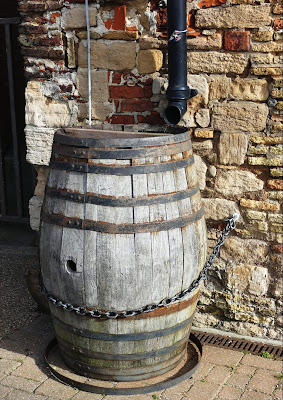Early in the 18th century someone had the bright idea to construct a walk or mall from the town eastwards across uncultivated, vacant and I'm guessing somewhat swampy land to the Guannock Gate then part of the town walls. It was hardly a long slog being just some three hundred or so yards long but then maybe folk had not made a fetish out of walking as essential to a healthy body and mind but as a means of getting from A to B if you didn't have a horse and cart to help you. Here if you had stuff to strut was where it could be strutted outwith the grime of the town, with ruined walls and meandering Gaywood River to view it was akin to a country park in an urban setting. Anyhow it was the start of something as the New Walk was improved, lined with fine trees, and later a second walk crossed it and then more walks were added as the thing spread out beyond the now demolished town walls. I write all this trivia because I wondered why the place wasn't called something like Le Strange Park or Losinga Gardens or after some other notable local bigwig, it's called the Walks because, though now it may look like a park and walk like a park it is, historically, a collection of walks. So now you know.
By way of comparison Hull when it finally spilled out of its walls in the late 18th century it dug a big hole and filled it with water; it was the biggest dock in the country, the Queen's Dock. Hull did not get a public park until the 1860s courtesy of gun-running property developer Zach Pearson. However the Queen's Dock is now Queen's Gardens ... with walks.
By way of comparison Hull when it finally spilled out of its walls in the late 18th century it dug a big hole and filled it with water; it was the biggest dock in the country, the Queen's Dock. Hull did not get a public park until the 1860s courtesy of gun-running property developer Zach Pearson. However the Queen's Dock is now Queen's Gardens ... with walks.
The Walks are lined with lime trees and horse chestnuts. Somebody has carved this out of a dead one.














